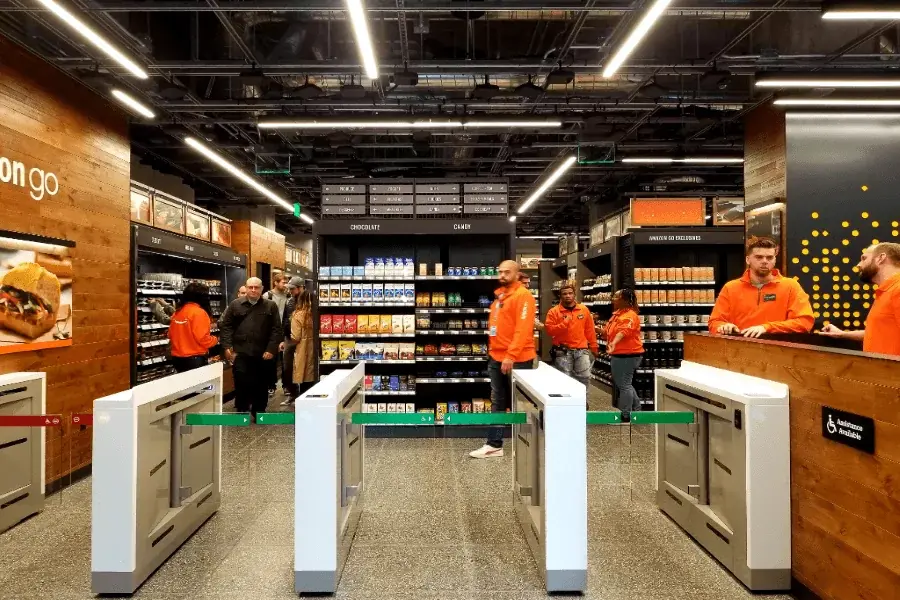Four ways remote monitoring (IoT) can transform coffee shops
Unless you’ve been living under a rock for the past few years, you’ll have heard about remote monitoring, also known as theInternet of Things (IoT),...
![]() Facilities Management
Facilities Management
Manage maintenance requests & streamline operations
CMMS
CAFM
EHS
Regulatory Compliance
PPM
EAM
Operations Management
Transportation Management
![]() Food Safety
Food Safety
Prove compliance and ensure standards are up to customer expectations
![]() Retail Task Management
Retail Task Management
Enable your teams to focus on delivering quality and achieve their goals.
Task Creation & Automated Follow-up
Unified Reporting and Data Analysis
Regulatory and Audit Monitoring
Full visibility of every task
IoT
Take action on your data to get ahead
Integrations
Bring mpro5 into your other tools
Automated Workflows
Make your work effortless with automated workflows
Managed Service
Supporting your operations, every step of the way
NEWS & INSIGHTS
Blogs & news
NEWS & INSIGHTS
GET IN TOUCH
GET IN TOUCH
3 min read
 Sam Roberts
May 29, 2024 3:26:59 PM
Sam Roberts
May 29, 2024 3:26:59 PM

Technological advancements are continuing to transform the retail industry, with the Internet of Things (IoT) leading the charge. Research shows that retailers are implementing IoT solutions to enhance operational efficiency and improve customer experiences. These technologies can monitor various operational aspects, alerting maintenance teams to issues and providing precise details about their location and nature. Managers are then informed once problems are resolved. As consumer expectations evolve and competition intensifies, embracing IoT solutions is crucial for retailers aiming to maintain a competitive edge and foster sustainable growth.
IoT technology refers to the network of interconnected devices equipped with sensors and software that enable them to collect and exchange data in real time. This connectivity allows for real-time data collection and analysis, leading to significant practical benefits. So, what does this mean in practice? From faster, more dynamic cleaning to better food temperature monitoring, improved crowd and footfall management, and more reliable ways of managing in-store slips and trips, IoT cameras, sensors, and critically, applications that can get the information to workers, are revolutionizing retail.
The latest IoT innovations allow retailers to make informed decisions and respond swiftly to changing conditions. Employees, from cleaners and technicians to security guards and others equipped with IoT process management applications, can quickly and effectively address issues by having direct access to essential information. This seamless integration of technology into daily operations has set new standards for efficiency and customer satisfaction in the retail sector.
Here are some of the many leading uses of IoT that are making significant strides in the retail industry:
IoT sensors are revolutionizing traditional cleaning practices by allowing for dynamic, needs-based cleaning schedules. In a busy supermarket, sensors can detect high-traffic areas and, by integrating with a process management app, signal cleaning staff to focus on these spots during peak hours. Conversely, deeper cleanings can be scheduled, and recorded, for quieter periods. This approach maximizes efficiency, reduces resource wastage, and ensures consistently clean environments, directly responding to evolving customer needs and operational demands. Cleaning can be verified, audited, and proven to ensure brand standards are maintained and health and safety regulations are being adhered to.
Ensuring food safety and compliance with regulations is a top priority for retailers. IoT probes provide real-time monitoring of fridge and freezer temperatures, ensuring that perishable items like dairy and meat products are stored at optimal temperatures throughout the day. This continuous monitoring not only mitigates risks but also enhances consumer trust and loyalty by reducing the risk of spoilage and maintaining product quality. If temperatures drop below a set level, alerts can be sent to staff via an integrated app to investigate and resolve the cause or escalate the issue to maintenance if required.
With an increasing focus on safety and customer experience, IoT sensors and cameras play a pivotal role in crowd management. In retail stores, these sensors can monitor the number of customers entering and exiting the premises in real-time. This data allows store managers to adjust staffing levels and manage queues efficiently during peak hours. By tracking customer flow and space utilization, retailers can proactively prevent overcrowding and long queues, optimize space usage, and improve overall customer satisfaction.
Creating a comfortable shopping environment involves effectively managing various environmental factors. IoT sensors enable retailers to monitor lux levels, noise levels, HVAC systems and air quality in real time. This comprehensive environmental monitoring ensures optimal conditions for customers and staff, enhancing the overall shopping experience. Changes to the environment can trigger alerts to staff who can take the necessary action to return the store to its optimal state.
Leveraging advanced IoT technologies, cameras can detect spillages and other hazards in real time. This swift detection allows for timely intervention, reducing the risk of accidents, liabilities and associated costs. Such proactive safety measures are essential in maintaining a safe and welcoming retail environment.
IoT technology is fundamentally changing how retailers operate, providing tools to create more efficient and customer-focused environments. As we reach peak retail seasons having effective in store operations is vital. The capabilities of advancing retail technologies such as IoT sensors are clear, but they are of little value if you can’t act immediately on what the technology tells you. The key to successfully utilizing IoT technology is to maximize its benefit to the bottom line by using the insights to improve operational performance, streamline processes, and deliver a more profitable and efficient business model, ultimately driving higher revenue and customer satisfaction. Those embracing advancements will undoubtedly set new standards for excellence in their industry while laying the groundwork for a more prosperous and sustainable future.
Unless you’ve been living under a rock for the past few years, you’ll have heard about remote monitoring, also known as theInternet of Things (IoT),...
In today’s radically evolving retail landscape, streamlining operations, while driving productivity and maintaining compliance, are essential for...
I’ve worked with many retailers over the years and it’s fair to say that compliance is a perennial thorn in their side. Okay, it’s not exactly...